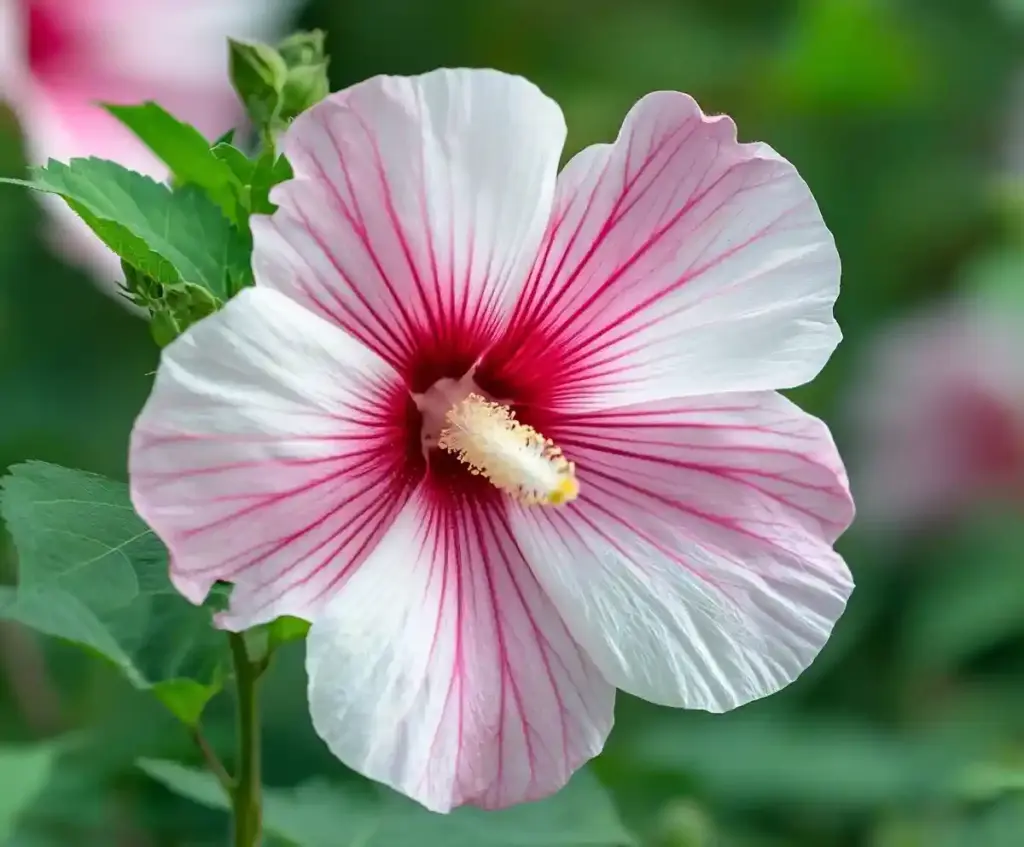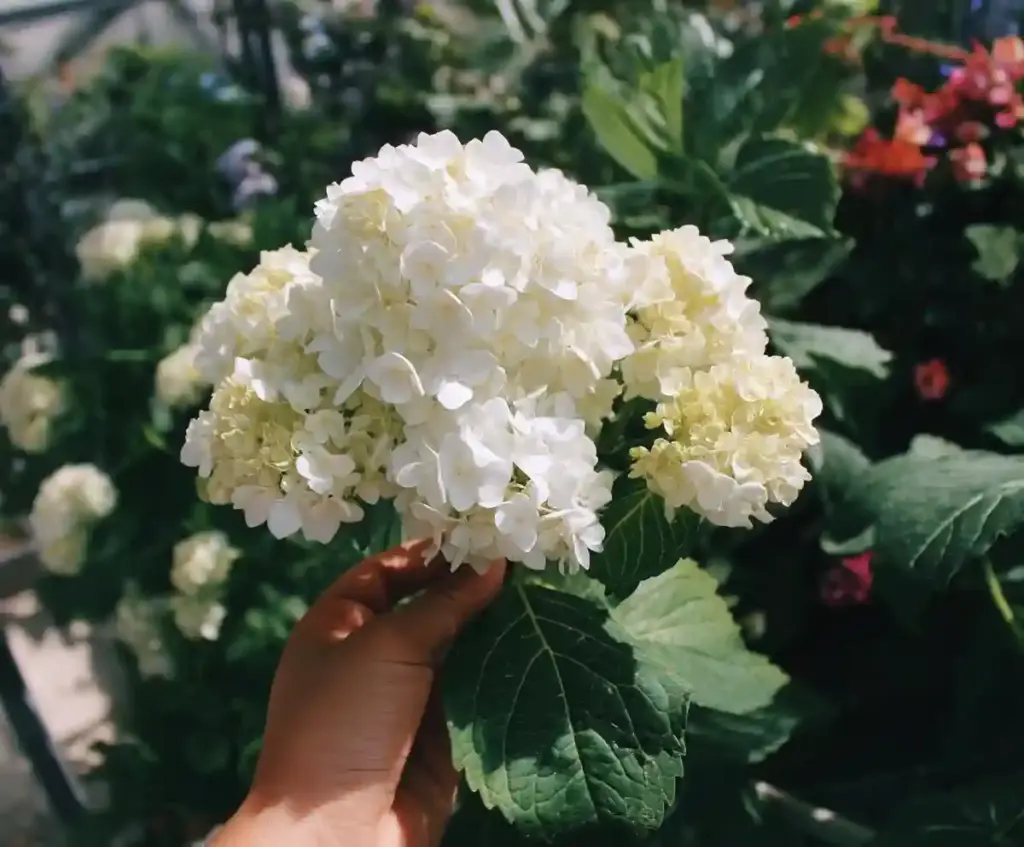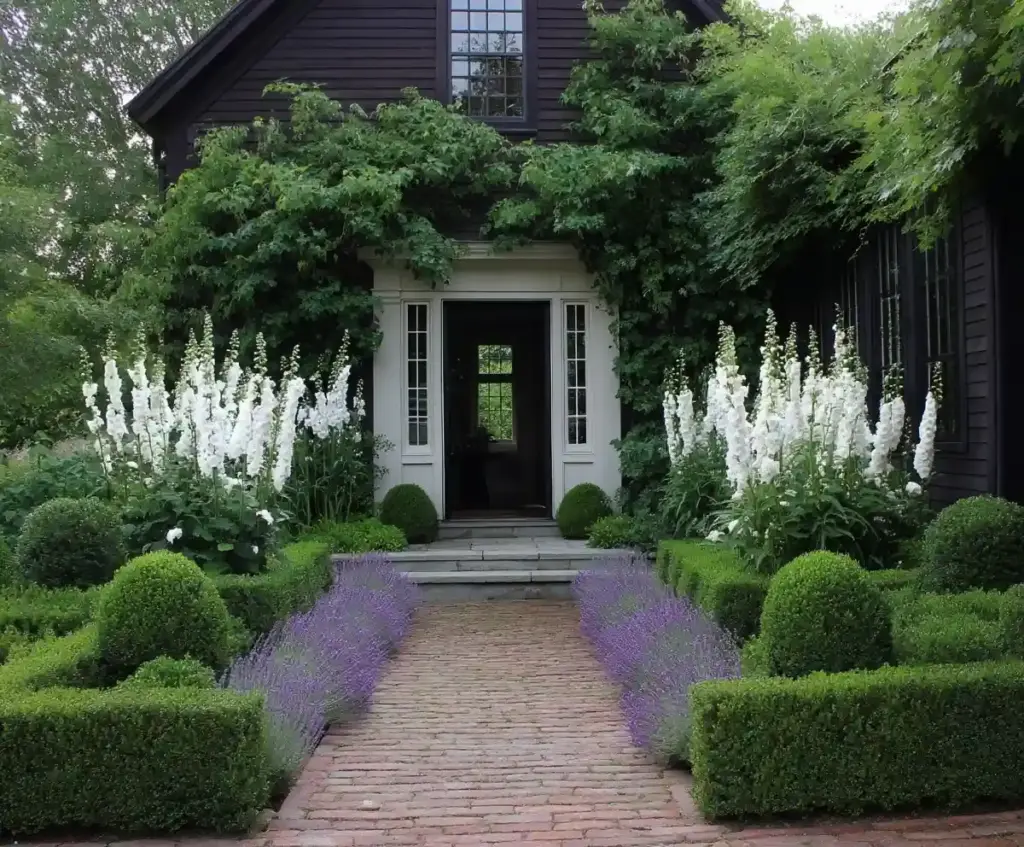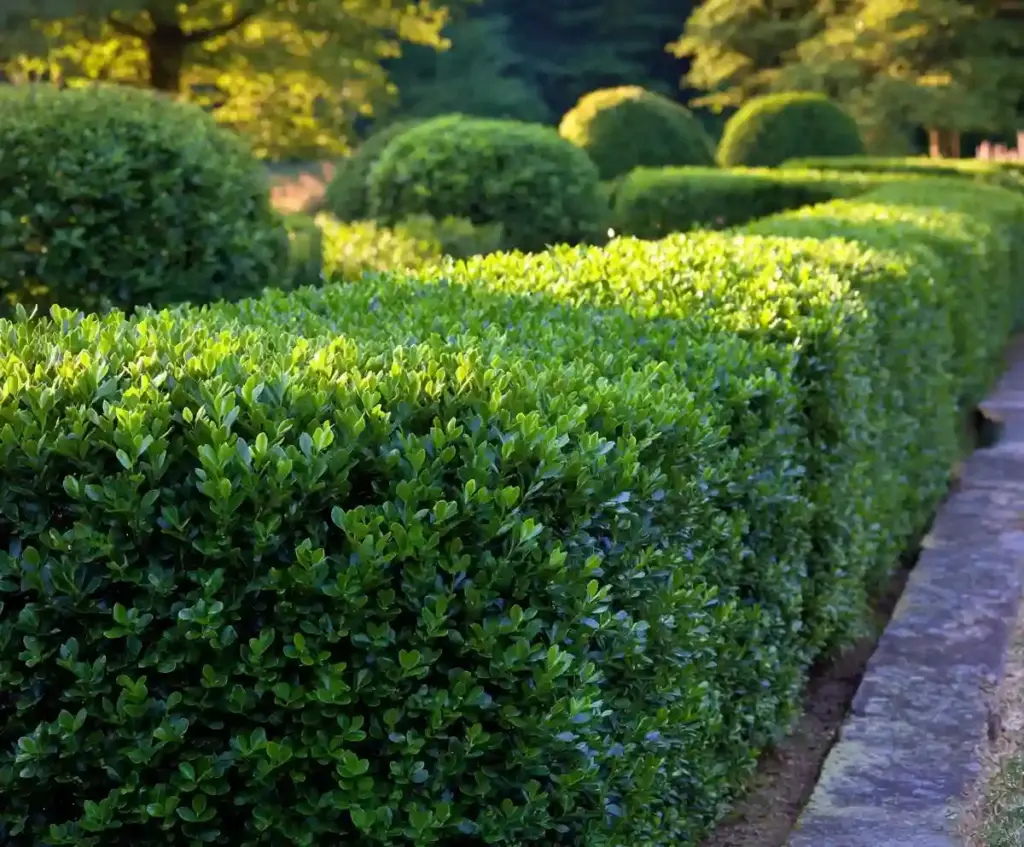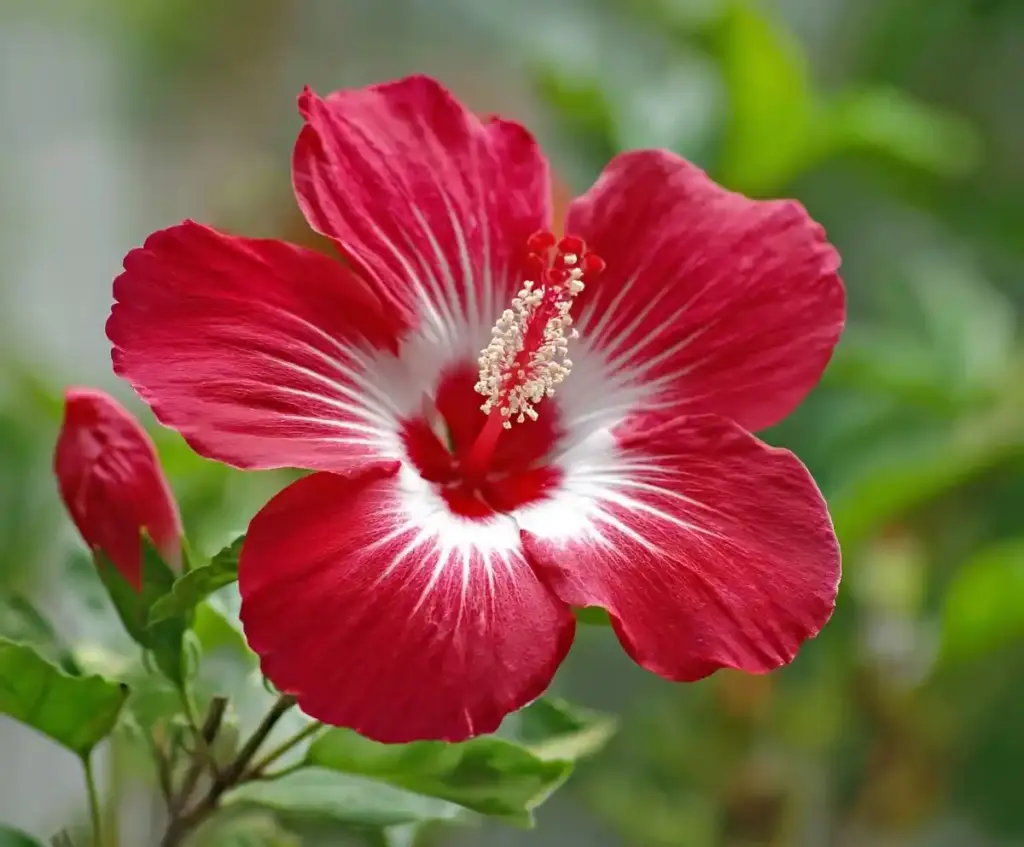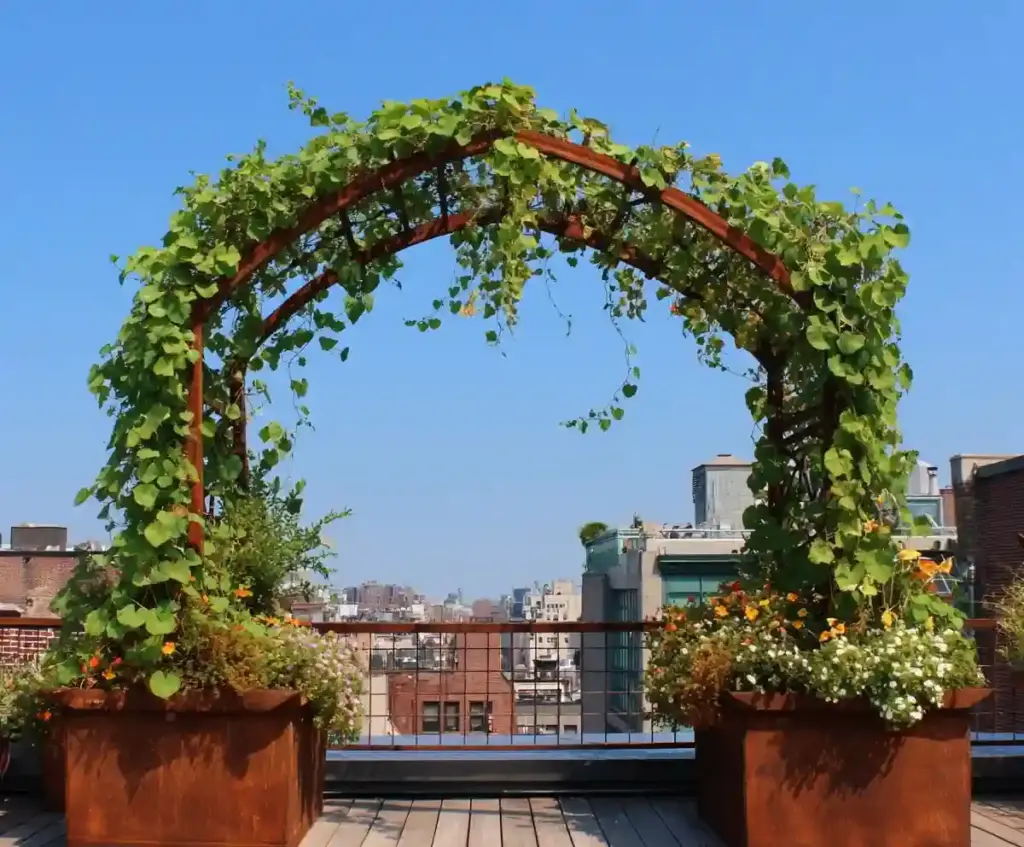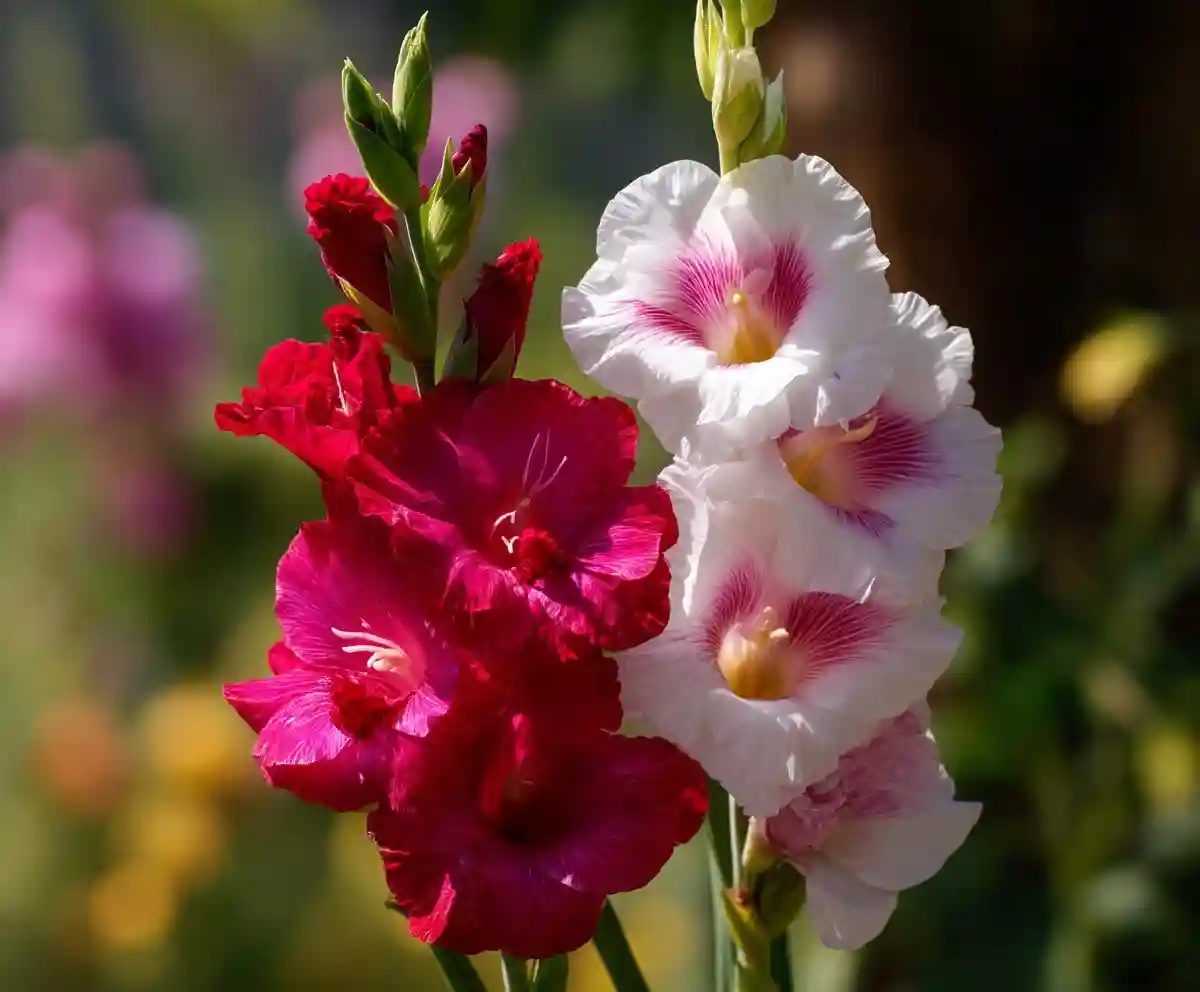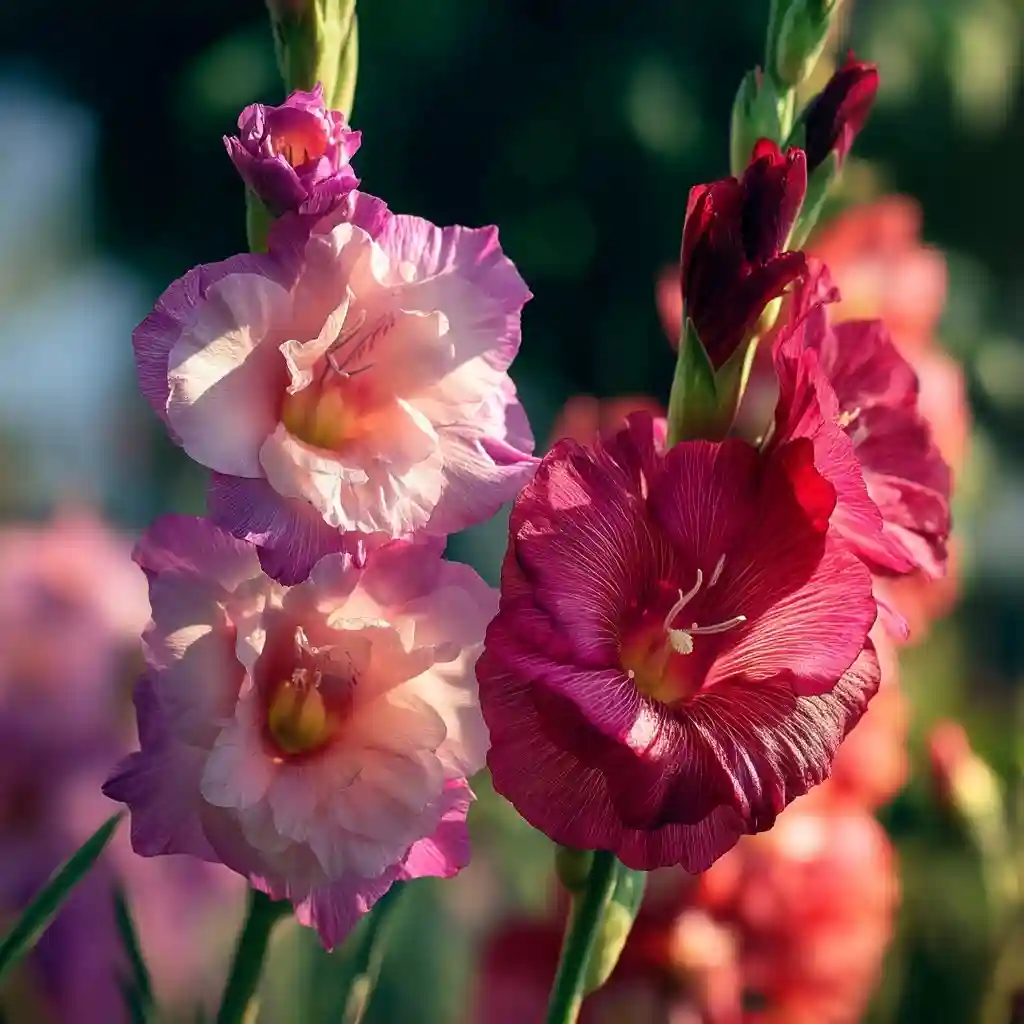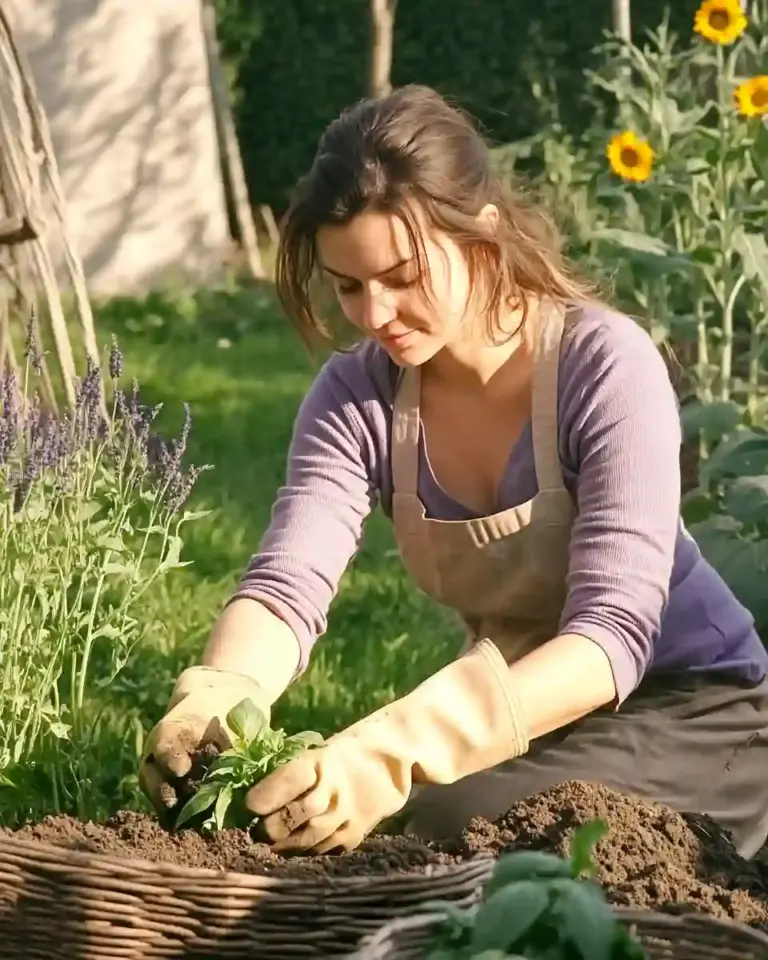Gladiolus vs hollyhock—it’s a classic comparison gardeners face when deciding which bold, beautiful blooms to plant. While both flowers bring charm and character to the garden, their growing habits, water needs, and visual appeal offer distinct advantages. Whether you’re building a colorful summer bed or planning a pollinator-friendly corner, choosing between gladiolus and hollyhock depends on your priorities: fast growth, vibrant petals, sun exposure, or ease of care.
This guide breaks down the key differences between these popular garden staples so you can make the best choice for your space—without the guesswork.
Table of Contents
Which Is More Colorful: Gladiolus or Hollyhock?
When comparing gladiolus vs hollyhock, color plays a major role in the final decision. Both flowers bring a stunning palette to the garden, but their vibrancy and petal structure differ significantly.
Gladiolus is known for its rich, saturated hues and tall, dramatic spikes filled with trumpet-shaped blooms. Shades range from bright white and coral to deep burgundy, purple, and even two-tone combinations that almost shimmer in the sun. Their bold coloring and structured blooms make them an eye-catching centerpiece in any bed or border.
Hollyhocks, while also colorful, lean toward softer, vintage tones. You’ll find them in shades of pink, red, yellow, and even black—a rare hue in the flower world that gives gothic or heritage-style gardens a unique edge. Their flatter, cup-like blossoms grow along tall stalks and create a nostalgic cottage garden look.
If pure vibrancy is your goal, gladiolus often wins out. But if you’re drawn to classic elegance and romantic tones, hollyhocks offer a timeless beauty that never feels out of place.
Which Flower Grows Faster: Gladiolus or Hollyhock?
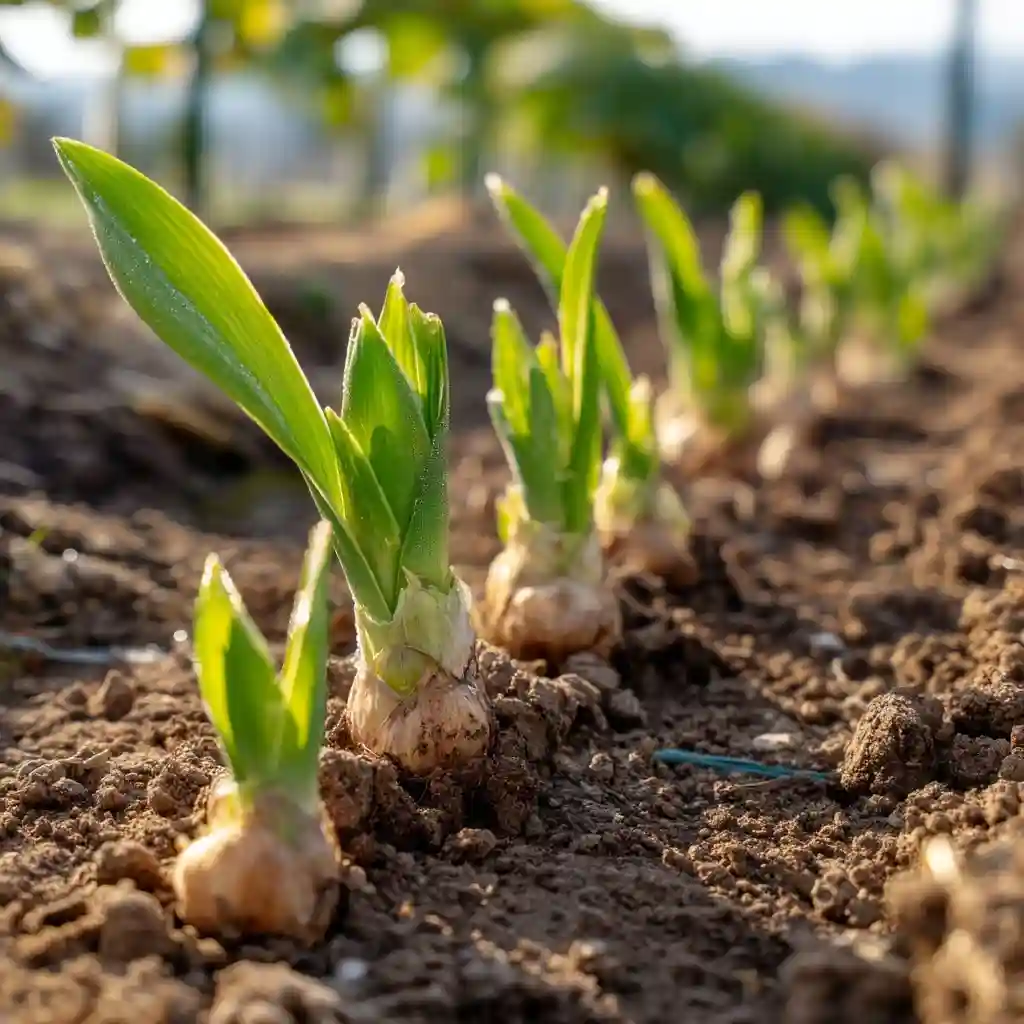
Speed of growth is another key factor in the gladiolus vs hollyhock debate—especially for gardeners looking to fill their beds quickly with blooms.
Hollyhocks typically germinate in about 10–14 days, with young plants ready to transplant or thin out in just 3–4 weeks. While many hollyhocks are biennials, some varieties bloom in their first season if started early indoors or in warm climates. Their tall, leafy stems develop steadily and often reach heights over six feet by mid-summer.
Gladiolus, on the other hand, grow from bulbs (or corms) and usually bloom within 70–90 days after planting. While they may take slightly longer to flower, they’re reliable performers in the right conditions. Because they’re grown from bulbs rather than seed, they skip the early germination stage entirely, making them a quicker option in some ways.
Overall, hollyhocks emerge and mature a bit faster in the seed stage, but gladiolus can still hold their own in terms of growth—especially if you’re planting bulbs in spring for late summer color.
Do Gladiolus Need Full Sun?
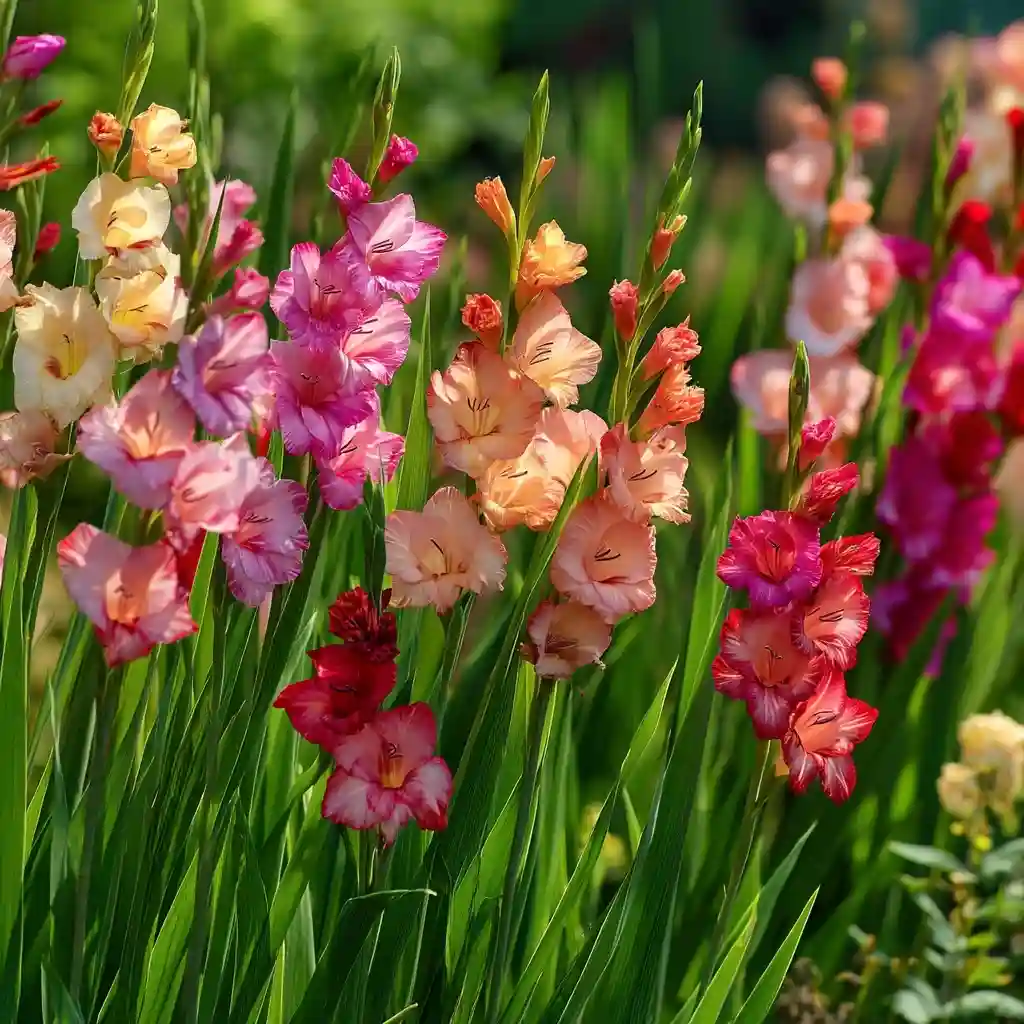
Sunlight is essential when deciding between gladiolus vs hollyhock, and gladiolus in particular thrive with plenty of it. These vibrant flowers require full sun to grow strong, straight, and packed with blossoms. Ideally, gladiolus should receive at least 6 hours of direct sunlight daily, though more is even better.
While they can tolerate light shade, reduced sunlight often leads to weaker stems and fewer blooms. In cooler regions, planting gladiolus in the sunniest part of the garden ensures they reach full maturity before the season ends.
Additionally, USDA zones 7–10 are best suited for gladiolus as perennials, though gardeners in colder zones can grow them as annuals or lift and store the bulbs over winter. In either case, full sun is non-negotiable for optimal performance.
If your garden is shady, gladiolus may not reach their full potential—but in a sunny bed, they’ll reward you with bold, brilliant spikes all season long.
Do Hollyhocks Need Full Sun?
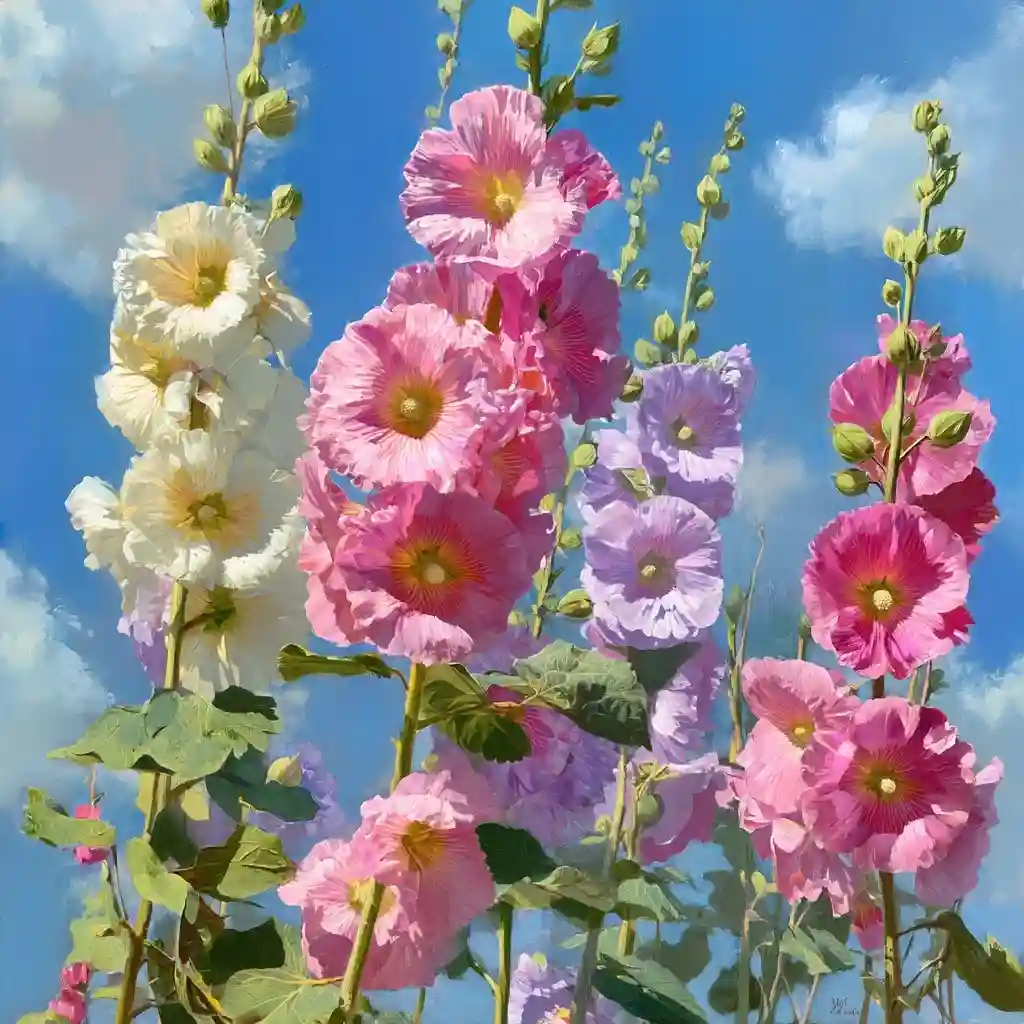
Just like gladiolus, hollyhocks flourish in sunny conditions. If you’re comparing gladiolus vs hollyhock for a full-sun location, both are excellent choices—but hollyhocks can be slightly more flexible.
To grow tall and bloom profusely, hollyhocks need at least 6 hours of direct sun per day. In full sun, their sturdy stalks stretch upward, supporting dozens of colorful blooms from late spring into summer. More sunlight typically leads to stronger stems, healthier foliage, and a longer flowering season.
That said, hollyhocks can handle partial shade, especially in hotter climates where afternoon sun can be intense. In such cases, morning sun and light afternoon shade help prevent wilting or sun scorch.
Whether planted against a fence, along a wall, or as a backdrop in a mixed border, hollyhocks shine best when given room to grow—and plenty of light to soak up.
How Often Do I Need to Water Gladiolus?
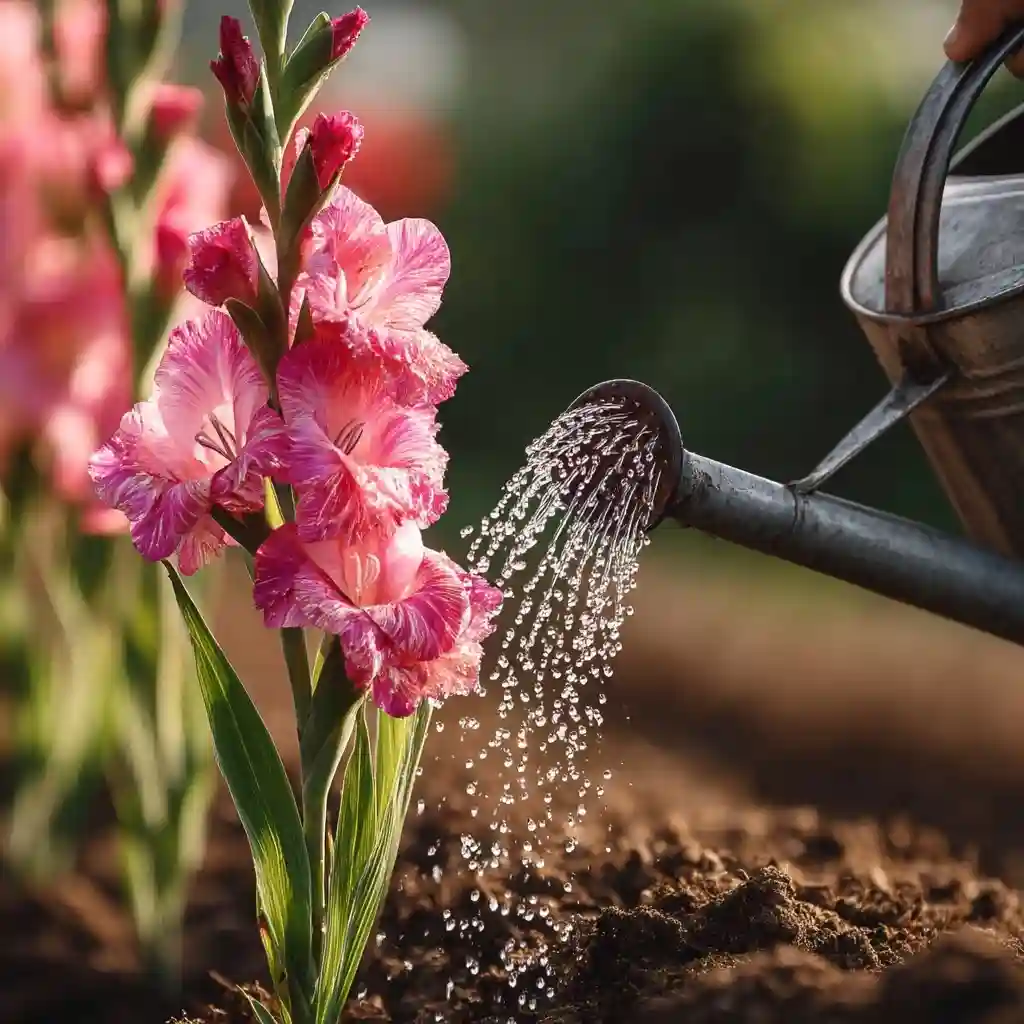
When caring for gladiolus, consistent watering is key to keeping those tall, flower-filled stalks looking their best. In the gladiolus vs hollyhock conversation, gladiolus tends to need a bit more attention early on—especially in warmer, drier regions.
As a rule of thumb, gladiolus should receive about 1 inch of water per week, either from rainfall or manual watering. During hot, dry spells or when growing in sandy soil, they may need water two to three times weekly, especially while establishing roots or forming flower spikes.
Young gladiolus bulbs are especially thirsty during the first 4–6 weeks after planting. But be cautious—these bulbs dislike soggy conditions. Make sure the soil is well-draining and lightly moist, not waterlogged. Overwatering can lead to root rot and fungal diseases that may prevent blooming altogether.
For best results, water deeply at the base of the plant to encourage strong root development, and mulch lightly to retain moisture without suffocating the soil.
Is Gladiolus Drought-Friendly?
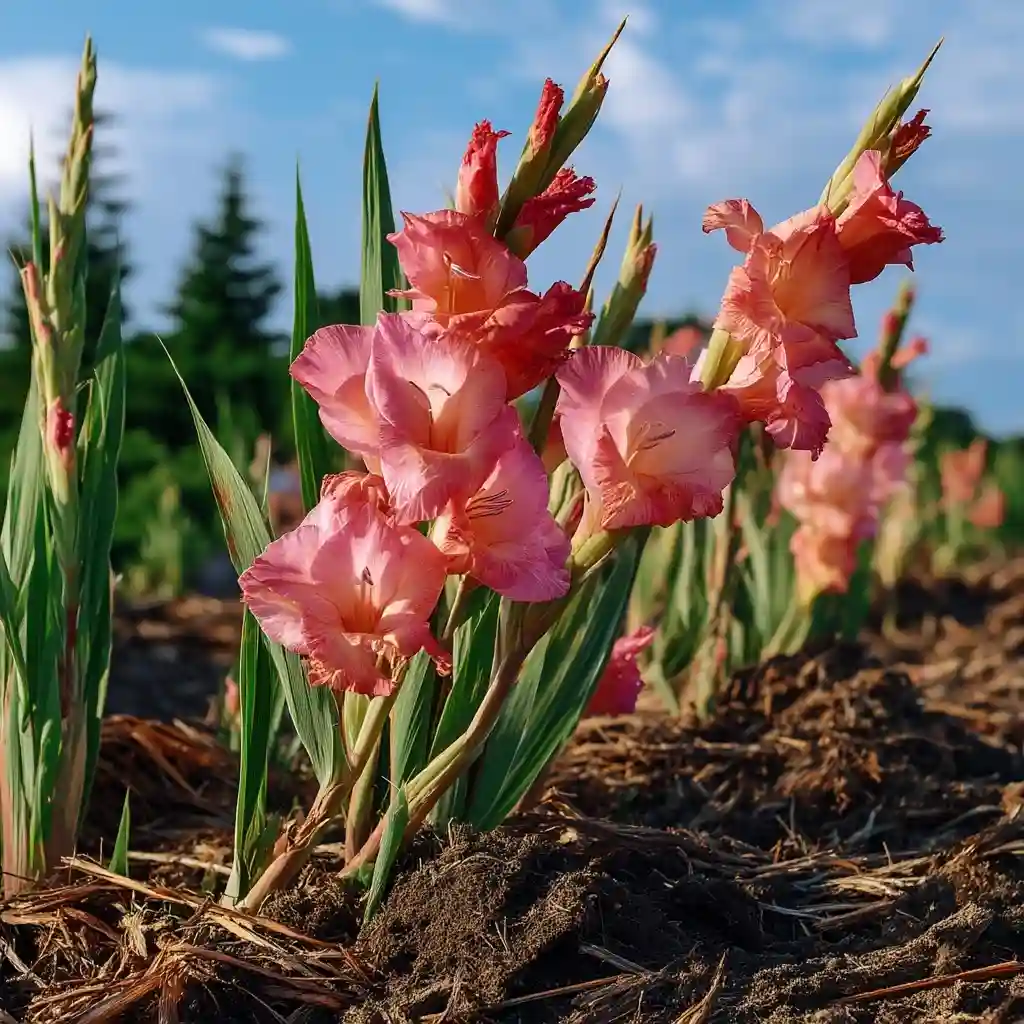
When weighing gladiolus vs hollyhock for drought resistance, gladiolus can hold their own—but only after they’re established. Young gladiolus plants require regular watering, but as they mature, they become moderately drought-tolerant.
This means that once the bulbs have developed strong roots and foliage, you can reduce watering slightly—especially if your garden has well-mulched beds that retain moisture. Still, even mature gladiolus will need weekly watering during hot or dry spells, particularly in full sun.
To improve drought tolerance:
- Use compost or mulch around the base to keep the soil cool and moist.
- Space bulbs properly to prevent overcrowding and reduce competition for water.
- Consider dividing your gladiolus bulbs every 4–5 years, which strengthens the plants and improves their ability to store moisture.
While they aren’t the most drought-hardy flower out there, with a little planning, gladiolus can thrive even in gardens with less frequent watering.
How Often Should I Water Hollyhocks?
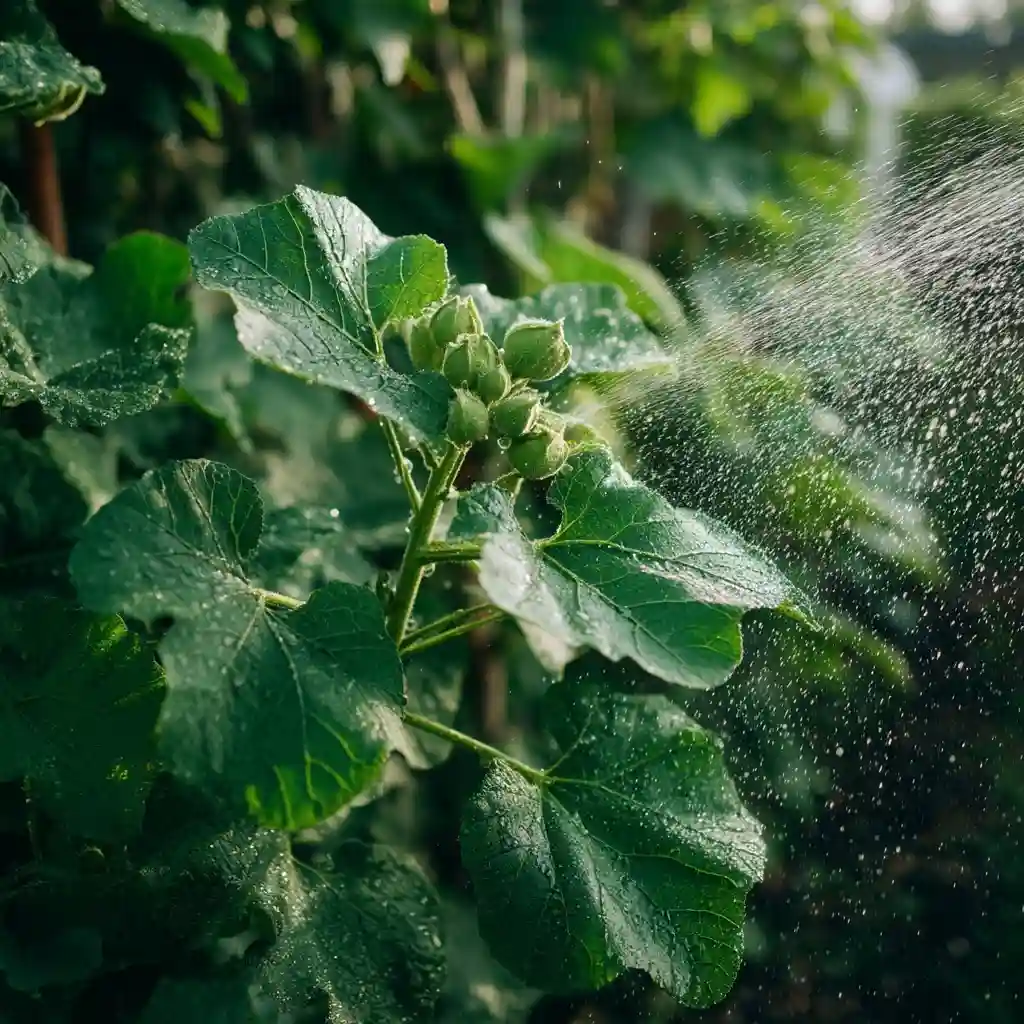
Compared to gladiolus, hollyhocks are slightly more forgiving when it comes to watering. If you’re comparing gladiolus vs hollyhock for low-maintenance watering needs, hollyhocks might edge ahead—especially once they’re fully grown.
In general, hollyhocks need 1–2 inches of water per week, depending on temperature and soil type. During their active growing and blooming season (typically spring and summer), you’ll want to water them 1–3 times per week, particularly during dry or windy weather that causes rapid evaporation.
Hollyhocks prefer evenly moist soil, but they don’t like soggy roots. Use a well-draining soil and allow the top inch to dry out between waterings to avoid issues like root rot or mildew. In climates with moderate rainfall, you may not need to water much at all.
As hollyhocks mature, their deep root systems help them access water from lower soil layers, making them more drought-resilient than many other flowering plants.
Can You Overwater Hollyhocks?
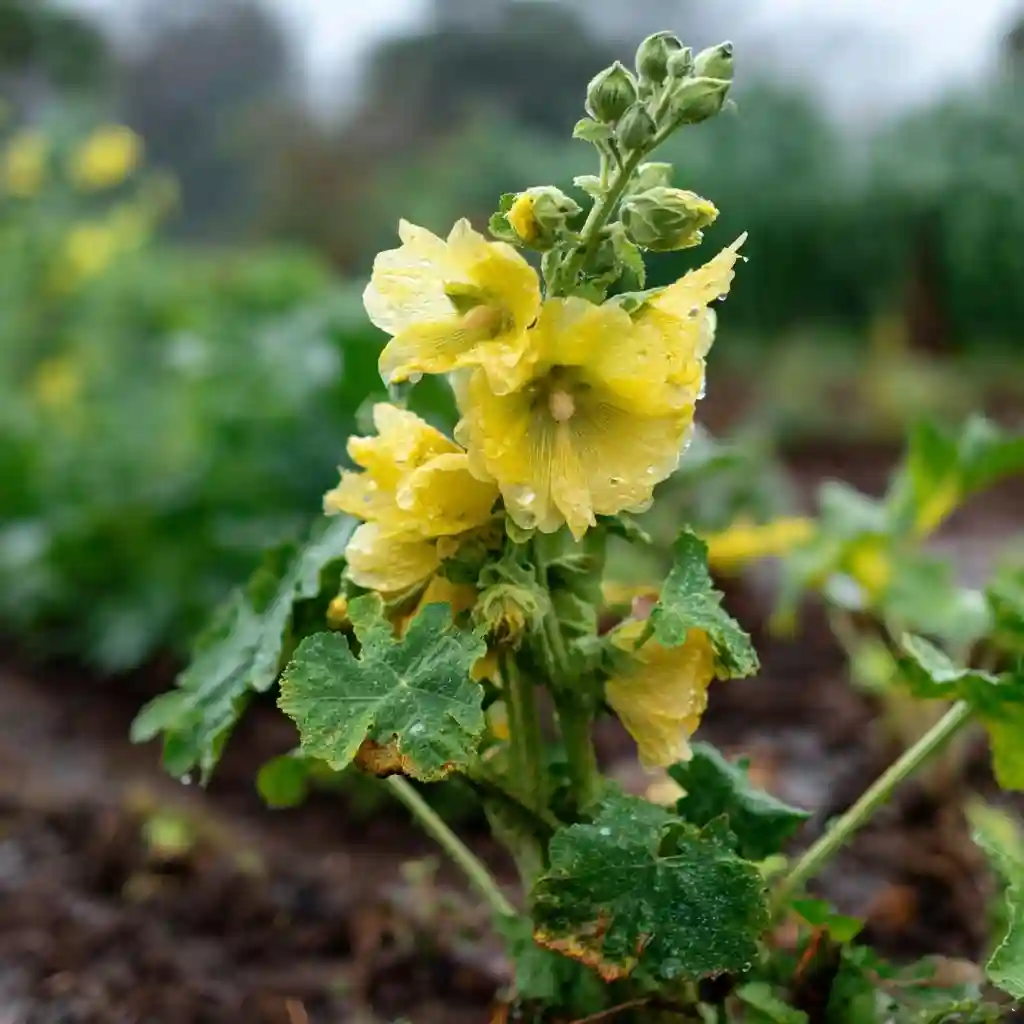
Yes—overwatering hollyhocks is not only possible but one of the more common mistakes gardeners make. In the gladiolus vs hollyhock comparison, both plants dislike sitting in soggy soil, but hollyhocks in particular are prone to issues if their roots stay too wet for too long.
These tall bloomers thrive in moist but well-drained soil. Too much water can lead to root rot, fungal diseases, and a condition gardeners refer to as “wet feet,” where roots are essentially suffocated by excess moisture.
Here’s how to avoid overwatering hollyhocks:
- Water deeply but infrequently—aim for once or twice a week depending on weather.
- Let the top inch of soil dry out between waterings.
- Use a layer of mulch to retain moisture without overwatering.
- Avoid planting in low-lying areas where water pools after rain.
If leaves start yellowing or wilting despite moist soil, it’s often a sign of overwatering—not underwatering.
Conclusion
When it comes to gladiolus vs hollyhock, the better flower really depends on your garden goals. If you’re looking for bold, vibrant spikes that demand attention, gladiolus brings show-stopping color and structure to sunny beds. For a softer, vintage appeal with towering blooms that charm pollinators and passersby, hollyhocks are a timeless favorite.
Both flowers are relatively easy to grow, thrive in full sun, and become more drought-tolerant as they mature. With similar watering needs and cold tolerance, your decision may simply come down to aesthetic preference—and there’s no wrong answer.
So whether you choose one or plant both, you’ll enjoy a season filled with color, height, and floral beauty.
FAQs
Can I grow gladiolus and hollyhocks together?
Absolutely! Their height and color contrast beautifully. Just give each enough space and sunlight.
Are gladiolus or hollyhocks better for pollinators?
Both attract bees and butterflies, but hollyhocks are especially popular among native pollinators.
Do either of these flowers reseed themselves?
Hollyhocks often self-seed and return yearly. Gladiolus must be replanted unless grown in warm zones.
Which one is easier for beginner gardeners?
Hollyhocks are typically lower-maintenance from seed, while gladiolus are easy to grow from bulbs.
🌿 Love gardening inspiration? Follow me on Pinterest for bold plant ideas, tips, and seasonal color!
More Posts
